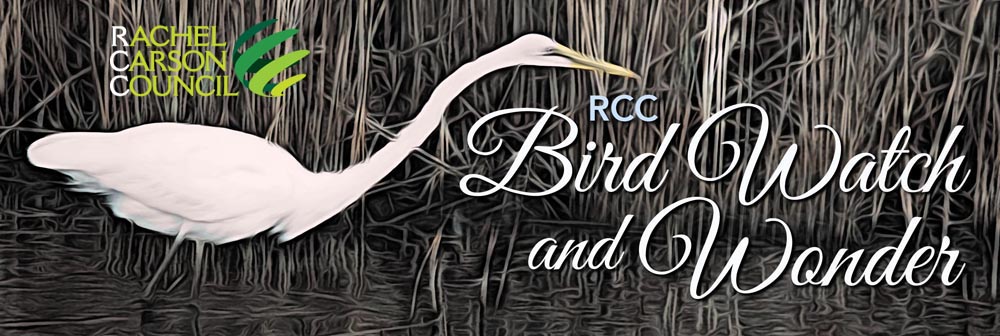 | | | 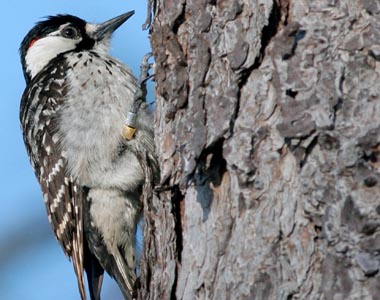 Like migrating fall birds, what we know about birds, birding, and those who care about such things is ever changing, always new. In this October issue of RCC Bird Watch and Wonder, for example, we welcome Andy Wood and his public media series CoastLine with a look at the Red-cockaded Woodpecker and its connection to longleaf pine. Among other things, Andy also leads Cape Fear Riverboat cruises sponsored by the Southern Forests Conservation Coalition (SFCC) and the Rachel Carson Council to learn about the effects on the ecology of the Cape Fear watershed of clear cutting North Carolina forests to manufacture wood pellets. Like migrating fall birds, what we know about birds, birding, and those who care about such things is ever changing, always new. In this October issue of RCC Bird Watch and Wonder, for example, we welcome Andy Wood and his public media series CoastLine with a look at the Red-cockaded Woodpecker and its connection to longleaf pine. Among other things, Andy also leads Cape Fear Riverboat cruises sponsored by the Southern Forests Conservation Coalition (SFCC) and the Rachel Carson Council to learn about the effects on the ecology of the Cape Fear watershed of clear cutting North Carolina forests to manufacture wood pellets. You’ll also find how birding continues to burgeon with new and more diverse folks attracted to bird watching, as well as how the spread of social media and apps for rare bird alerts can learn to mob scenes when a rarity like a Mourning Warbler hits New York’s Central Park. Birders also increasingly defy the prim stereotypes that used to fill New Yorker cartoons. Take Bryan Pfeiffer, for example, who, in his blog, Chasing Nature, offers a humorous and loving look at the marvels of sea gulls – including when they barf. We continue to learn more, too, about the capabilities of birds, including the highly intelligent crow. New studies reveal that crows are not only smart, but also highly self-aware and possess what we call consciousness. 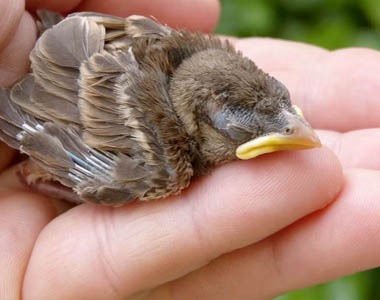 RCC’s Ross Feldner is always full of surprises, too. This month he offers a short guide with photos of what to do, or not do, when you find a baby bird. There’s even more new and interesting features as you read on in this October issue. Be sure to find bird art and bird artists, events like fall festivals at National Wildlife Refuges, and, of course, the “Best of Bird of the Week” and the “Best of Momentary Meditations.” Then there is my personal favorite, Backyard Birding for Kids, by Erika Zambello. It’s a hopeful book on how to get kids hooked on birding and ornithology. It sure looks from here like the love of birds and concern for the ecosystems that support them will only continue to grow. Now that is the kind of change we need. RCC’s Ross Feldner is always full of surprises, too. This month he offers a short guide with photos of what to do, or not do, when you find a baby bird. There’s even more new and interesting features as you read on in this October issue. Be sure to find bird art and bird artists, events like fall festivals at National Wildlife Refuges, and, of course, the “Best of Bird of the Week” and the “Best of Momentary Meditations.” Then there is my personal favorite, Backyard Birding for Kids, by Erika Zambello. It’s a hopeful book on how to get kids hooked on birding and ornithology. It sure looks from here like the love of birds and concern for the ecosystems that support them will only continue to grow. Now that is the kind of change we need. | | | | | | | | 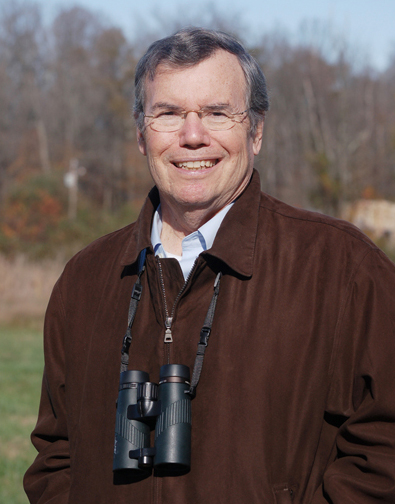 Bob Musil is the President & CEO of the Rachel Carson Council and author of Rachel Carson and Her Sisters: Extraordinary Women Who Have Shaped America’s Environment (Rutgers, 2016) and Washington in Spring: A Nature Journal for a Changing Capital (Bartleby, 2016). He is also the editor of the forthcoming annotated edition from Rutgers University Press of Rachel Carson’s Under the Sea-Wind with his Introduction, updated marine science, and historic and contemporary illustrations and photographs. Bob Musil is the President & CEO of the Rachel Carson Council and author of Rachel Carson and Her Sisters: Extraordinary Women Who Have Shaped America’s Environment (Rutgers, 2016) and Washington in Spring: A Nature Journal for a Changing Capital (Bartleby, 2016). He is also the editor of the forthcoming annotated edition from Rutgers University Press of Rachel Carson’s Under the Sea-Wind with his Introduction, updated marine science, and historic and contemporary illustrations and photographs. | | | | | | CoastLine: In The Wild Coastal Plain with Andy Wood, the Red-cockaded Woodpecker, and Longleaf Pine As natural areas disappear, we’re taking a closer look at what we’re losing, species by species, in a new CoastLine series called In The Wild Coastal Plain. On this edition of CoastLine, we explore why the intertwined fates of the red-cockaded woodpecker and longleaf pine are important harbingers of the area's fate. As the population swells in southeastern North Carolina, and developers make room for more buildings – homes, apartments, stores – we’re witnessing the rapid destruction of natural areas. | | | | | | | | Social Dilemma: What’s at Stake When We Propel Wild Birds to Stardom? Manhattan Bird Alert, a New York-based social media account, has fueled the rise of celebrity birds while attracting droves of new birders. But like many a story of unchecked fame, the phenomenon is also a cautionary tale. On May 11, 2018, Andrew Farnsworth saw something that was almost unbelievable. A migration ecologist at the Cornell Lab of Ornithology, Farnsworth has seen more than his fair share of rare birds. | | | | | | | | A Gull Barfing by the Sea Respite and reflection in the fog (and in the company of regurgitation) ALTHOUGH I HAVE an inordinate fondness for gulls, I do not make a habit of watching them throw up. But in the fog on a tiny island at sea, the Herring Gull and I had been spending quality time together. And the barfing, well, you know, these things happen. Most of the time the Herring Gull and I did little more than gaze into the gray and blue from our rocky spot on Monhegan Island in the Gulf of Maine. | | | | | | | | Crows Are Self-Aware and 'Know What They Know,' Just Like Humans Almost no other species has that kind of higher intelligence. In what now feels like an annual update, crows are even more surprisingly smart than we thought. But do they have true consciousness? Research shows that crows and other corvids “know what they know and can ponder the content of their own minds,” according to STAT. This is considered a cornerstone of self-awareness and shared by just a handful of animal species besides humans. | | | | | | | | Meetup Group Beckons New Birders to Field and Forest Hawks were the gateway bird that turned Santiago Carnice, age 10, into a birder. For Jacob Roberts, 24, it was an ornithology class at his university in Colorado that piqued his interest — just as the pandemic left him looking for a new outdoors hobby. “It’s a combination of mindfulness and real-life Pokémon,” Roberts said as he hiked down a new trail with a group of seven birders he had met just that morning. | | | | | | | | | | How L.A.’s Bird Population is Shaped By Historic Redlining and Racist Loan Practices On a recent afternoon in L.A.’s Boyle Heights neighborhood, Christian Benitez and Eric M. Wood stood outside a corner liquor store searching for birds. The researchers spotted a house sparrow and pulled binoculars to their eyes. “They’re all over the shrubbery in Boyle Heights,” said Wood, an associate professor of ecology at Cal State Los Angeles. | | | | | | | | BirdCast Radar Forecasts Bird Migration in Real Time October 14 is World Migratory Bird Day in the Southern Hemisphere. To better forecast bird migration, scientists are using machine learning and next-generation radar. The resulting “BirdCasts” offer new ways to help birds at risk. Shelley Schlender reports from the Rocky Mountain state of Colorado. | | | | | |  | | | Should I Stay or Should I Go? If You Find a Baby Bird, What Should You Do? You’re walking along and suddenly you notice a baby bird on the ground. What should you do? Our feathered friends are currently facing multiple threats including loss of habitat, climate change, building collisions, outdoor cats, overuse of pesticides and more. It’s natural for us to want to help. The first thing you need to determine is whether the baby bird you’ve found is a hatchling, nestling, or a fledgling. | | | | | | | | Almost 1,000 Birds Died in One Night From Striking a Chicago Building Another 1,000 were killed in window collisions across the downtown area, amid calls for more bird-friendly architecture and reduced light pollution In an average year, about 1,000 to 2,000 migratory birds die from striking a lakeside Chicago convention center, reports Clare Marie Schneider for NPR. But on one single night last week, at least 961 birds were killed after crashing into the building’s glass exterior. | | | | | | | | Chicago’s Feminist Bird Club Aims To Make Birding More Inclusive Although the group meets more frequently during warmer months, organizers still host events throughout the winter and have found birding helps them appreciate the cold weather more. Early in the pandemic, Emily Tallo started trying to spot birds because it’s a free activity you can do anywhere. | | | | | | | | Space Weather Disrupts Nocturnal Bird Migration, Study Finds It’s well-known that birds and other animals rely on Earth’s magnetic field for long-distance navigation during seasonal migrations. But how do periodic disruptions of the planet’s magnetic field, caused by solar flares and other energetic outbursts, affect the reliability of those biological navigation systems? University of Michigan researchers and their colleagues used massive, long-term datasets from networks of U.S. Doppler weather radar stations and ground-based magnetometers | | | | | | | | Bird Biodiversity is Declining in Places We’ve Altered The decline stems from human activities modifying or disturbing birds’ habitats, according to the study in the journal Ecography. “We know anthropogenically modified environments can negatively impact biodiversity by decrease the number of species,” says Corey Callaghan, assistant professor of global ecology at University of Florida Institute of Food and Agricultural Sciences’ Fort Lauderdale Research and Education Center. | | | | | | | | On the Wings of Birds: A Brief Discussion on the Symbolism of Birds in Art “I don’t know about birds nor do I know the history of fire. But I believe that my solitude should have wings.”- Alejandra Pizarnik, author and poet, whose writing influenced the artist Bastardilla. Birds. Many of us have some sort of daily interaction with birds, be it chasing pigeons off your balcony or listening to their songs through our window. Humanity has been fascinated with birds for our entire history and the art we have created reflects this. | | | | | | | | Our Favorite Bird Artists From Ancient Egyptian cave markings to paintings in the world’s most prestigious museums, bird art has a long, storied history. Artists have depicted birds in sketches, illustrations, and paintings for over 40,000 years. Early bird renderings had more to do with spirituality than ornithology. The Egyptians believed birds to be winged symbols of their gods. Later, Christians would link certain birds to the Christ, including them in their art as a nod to this symbolism. | | | | | | | | Some of the Best Festivals Take Place at or Near National Wildlife Refuges For a wonderful nature show, it’s hard to beat a bird festival. Some of the best bird fests occur at or near national wildlife refuges. That’s not surprising, given that these public lands are such birdy places. National wildlife refuges, managed by the U.S. Fish and Wildlife Service, also have resident bird experts and dedicated wildlife viewing areas. Here is our 2023-24 calendar of bird festivals at or near refuges. | | | | | | | | | | | | Limpkin This large wading bird lives mostly in wetland Florida and Georgia. It takes its name from its seeming limp when it walks. Limpkins feed mainly on snails, particularly apple snails and have a specialized bill that is is slightly open near the end, which gives it a tweezers-like ability to remove snails from their shells. The bill also curves slightly to the right matching the shell of the apple snail! They're known for their piercing, eerie wail usually heard at night that’s been featured in movies. | | | | | | | | Take-off Together I have seen this scene many times, and each time it moves my heart to wonder: What signal does the lead goose give and why do the others patiently wait for it before taking off in unified motion. | | | | | | | | Backyard Birding for Kids: An Introduction to Ornithology 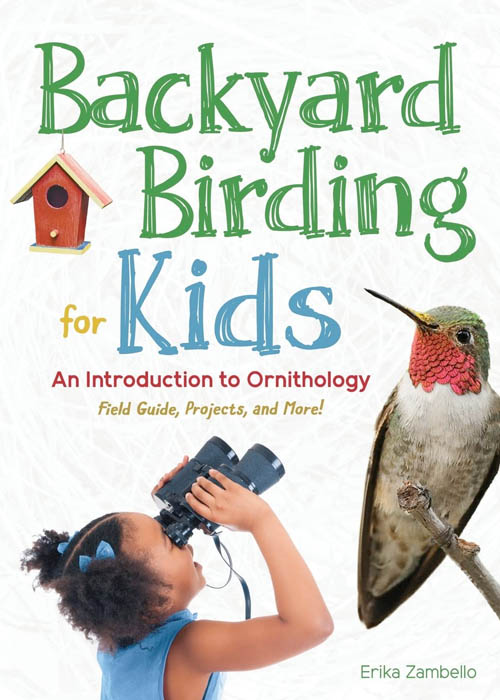 With bird facts, an identification guide, and how-to instructions, this is a perfect children’s introduction to bird-watching. With bird facts, an identification guide, and how-to instructions, this is a perfect children’s introduction to bird-watching.
You’ve seen birds in your backyard or at the local park. Now become a young ornithologist. Learn all about the scientific study of birds. Author, birder, and outdoors researcher Erika Zambello presents a kids’ introduction to birding. The children’s book, ideal for early and middle-grade readers, conveys fascinating information for beginners. Kids gain an understanding of such topics as bird anatomy, life cycle, and habitat.
From there, readers are introduced to 60 different species of important birds to know. With chickadees, hummingbirds, owls, woodpeckers, and more, the field guide section serves as an identification aid and offers information about when to look, where to look, and what to look for. A how-to section provides advice to help children get started birding—with practical tips on attracting birds to their yards. There are also fun activities for the entire family to enjoy, a wonderful way to turn birding into a shared hobby. The activities range from simple, like leaving out nesting materials, to advanced, such as planting a bird- and pollinator-friendly garden. Inside You’ll Find - how-to section, including details on getting started
- The basics of ornithology
- Identification guide to common and important birds to know
- Bird-related activities that the entire family can enjoy
Click here to purchase | | | | | | The Role of Birds in World War One:
How Ornithology Helped to Win the Great War 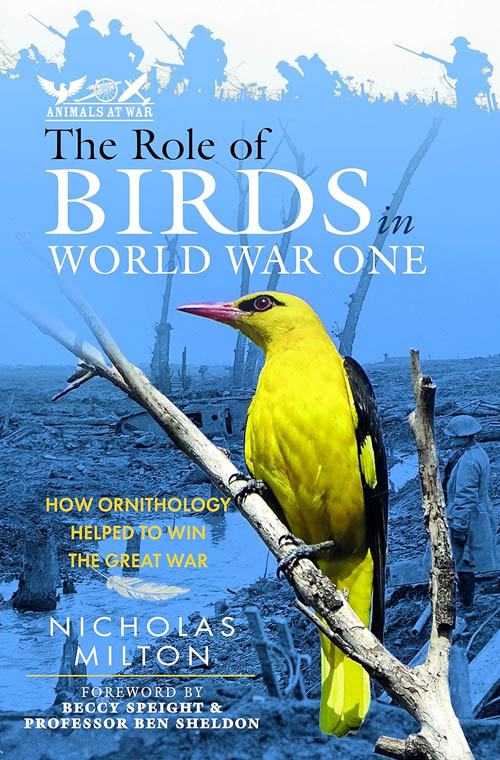 The British Expeditionary Force sent to France in the late summer of 1914 has been referred to as ‘The Best British Army Ever Sent to War’ as it was one of the most highly trained and disciplined forces in the world. It was also the ‘Best Birdwatching Army Ever Sent to War’ for among its ranks were hundreds of both amateur and professional ornithologists. When not fighting many soldiers turned to birdwatching as a way of wiling away the long hours spent on guard duty or watching over ‘no man's land’. As a result, the hobby ranked as one of the most popular past-times for soldiers at the front, on a par with smoking, writing, games, gambling, sport and shooting rats. The list of birds seen by soldiers serving in all the theaters of war was truly impressive ranging from the common like sparrows, skylarks and swallows to the exotic like golden orioles, hoopoes and bee-eaters. The British Expeditionary Force sent to France in the late summer of 1914 has been referred to as ‘The Best British Army Ever Sent to War’ as it was one of the most highly trained and disciplined forces in the world. It was also the ‘Best Birdwatching Army Ever Sent to War’ for among its ranks were hundreds of both amateur and professional ornithologists. When not fighting many soldiers turned to birdwatching as a way of wiling away the long hours spent on guard duty or watching over ‘no man's land’. As a result, the hobby ranked as one of the most popular past-times for soldiers at the front, on a par with smoking, writing, games, gambling, sport and shooting rats. The list of birds seen by soldiers serving in all the theaters of war was truly impressive ranging from the common like sparrows, skylarks and swallows to the exotic like golden orioles, hoopoes and bee-eaters.
It was not just at the battle front that birds found themselves in the firing line but also on the home front. Birds provided inspiration for politicians, poets and painters who carried on despite the terrible conflict raging all around them. For the Foreign Secretary Edward Grey, who worked tirelessly to preserve peace but ended up convincing the House of Commons to go to war, birds were his hinterland. But as well as declaring war on Germany on 4 August 1914 the government also declared war on the humble house sparrow, farmers falsely accusing it of destroying Britain’s dwindling wheat and oat supplies. Click here to purchase | | | | | | Brothers of the Wind 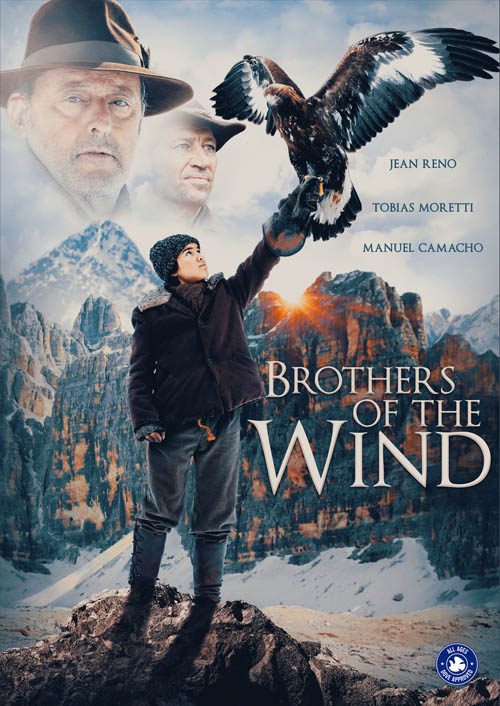 In a world where it takes courage to fly, a young boy nurtures a baby eagle into adulthood. Searching for their place in the world, they bond over their desire to be free. In a world where it takes courage to fly, a young boy nurtures a baby eagle into adulthood. Searching for their place in the world, they bond over their desire to be free.
Brothers of the Wind is the stirring story of an orphaned eaglet and an almost-orphaned boy who bond in a remote area high in the Alps. The personal story is set in a magnificent region filled with an abundance of wildlife, and the filmmakers spend much of the time recording the marvels they encounter.
The way of the eagle is to raise two chicks. The stronger is destined always to throw the weaker from the nest. Man also has his ways, often to hurt those closest to him. Lukas suffers at the hands of a father who has withdrawn since the loss of his wife. Killed whilst rescuing the infant Lukas, the boy now carries the burden of her death. Our eagle’s story begins in the nest. The first-born chick pushes his weaker brother to a certain death on the forest floor. But fate intervenes and the chick is found by Lukas. Naming him Abel, Lukas cares for the creature in secret, finding a love and companionship denied to him at home. But when the day comes to release Abel back into the wild, will Lukas find his own release into a new life? Click here to watch on Amazon Prime. • Click here to watch on TUBI. • Click here to watch on Roku | | | | | | The October 2023 issue of Bird Watch and Wonder was produced by Ross Feldner. | | | | | |  The Rachel Carson Council Depends on Tax-deductible Gifts From Concerned Individuals Like You. Please Help If You can. The Rachel Carson Council Depends on Tax-deductible Gifts From Concerned Individuals Like You. Please Help If You can. | | | |  Sign Up Here to Receive the RCC E-News and Other RCC Newsletters, Information and Alerts. Sign Up Here to Receive the RCC E-News and Other RCC Newsletters, Information and Alerts. | | | | | | | | | | | |